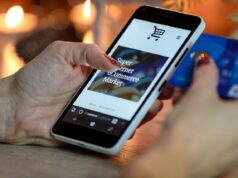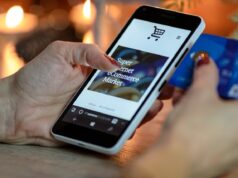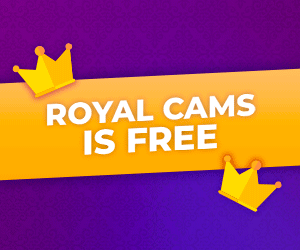The sinking feeling when you check your analytics and see 78% of visitors abandoned their carts without purchasing keeps ecommerce entrepreneurs awake at night. After designing storefronts that collectively generate over $20 million annually and running thousands of split tests, I’ve discovered the subtle psychological triggers and technical elements that transform passive browsers into committed buyers. This isn’t about flashy design trends—it’s about constructing a digital sales environment that guides visitors effortlessly from curiosity to checkout.
The first eight seconds of a visitor’s experience determine whether they’ll stay or bounce forever. Your hero section must answer three subconscious questions immediately: “What do you sell?” “Why should I care?” and “What do you want me to do?” The outdoor gear brand that increased conversions by 140% did this with a single, uncluttered hero image showing their backpack in use on a mountain hike, a clear value proposition (“Weatherproof packs built to last a decade”), and one prominent button (“Shop Now – Free Returns”). Contrast this with the common mistake of overcrowding the hero section with multiple CTAs, promotional banners, and animated sliders that paralyze visitors with choice.
Product pages represent the make-or-break moment in the customer journey. The jewelry store that achieved a 12% conversion rate (triple the industry average) displayed lifestyle images showing their pieces being worn from multiple angles, with a 360-degree spin feature for their premium items. Their product descriptions focused on transformation rather than specifications, answering “How will this make my life better?” instead of “What materials is it made from?” The inclusion of sizing guides as interactive tools rather than static charts reduced returns by 33% while increasing average order value.
Trust signals must be woven throughout the shopping experience, not relegated to a footer. The supplement brand that scaled to seven figures places their lab test results directly beneath the “Add to Cart” button, with clickable certificates of analysis for each batch. Their checkout page displays real-time purchase notifications (“Michael from Texas just bought Omega-3 Complex 2 minutes ago”) to leverage social proof at the decision point. The subtle but strategic placement of trust badges—credit card icons near the payment section, shipping guarantees by the delivery options—addresses objections exactly where they arise in the mental buying process.
Mobile optimization can no longer be an afterthought when 68% of ecommerce traffic comes from smartphones. The fashion retailer that decreased mobile bounce rate by 50% implemented thumb-friendly navigation with a bottom-aligned menu bar, properly sized tap targets spaced at least 48 pixels apart, and accelerated mobile pages that load in under 1.8 seconds. Their checkout flow reduced form fields to the absolute minimum, with autofill for addresses and digital wallet options that complete purchases in three taps. The mobile experience wasn’t just responsive—it was deliberately crafted for small-screen shopping behaviors.
The psychology of color and spacing influences conversions more than most merchants realize. The home goods store that increased add-to-cart rates by 27% used a neutral background palette that made their vibrant product images pop, with strategic splashes of a signature coral color to draw attention to CTAs. Their product grids followed the “golden ratio” of negative space, preventing visual overwhelm while making each item feel carefully curated. Even the direction of model gazes in product photos mattered—images where the model looked toward the “Add to Cart” button subconsciously guided visitors toward conversion.
Navigation should feel intuitive, not like solving a puzzle. The pet supplies brand that doubled time-on-site implemented mega menus with photographic category previews and logical grouping (organizing by pet type rather than product type). Their search function autocompletes with visual product suggestions and handles common misspellings—critical when 43% of ecommerce visitors use search immediately upon arriving. The inclusion of a “Shop by Need” section (categories like “Senior Dog Support” or “Kitten Starter Kit”) helped uncertain buyers find solutions without knowing specific product names.
Urgency and scarcity work when they’re authentic, not manipulative. The kitchenware store that maintains a 9% conversion rate shows actual inventory levels (“Only 3 left at this price”) rather than fake countdown timers. Their restock notifications create anticipation rather than pressure (“Back in stock next Tuesday – reserve yours now”), resulting in 22% of out-of-stock visitors providing their email for notifications. The key is providing genuine reasons to act now—limited edition colors, seasonal availability, or real-time demand indicators.
The checkout process is where most stores hemorrhage potential sales. The beauty brand that reduced cart abandonment by 40% implemented a multi-step progress indicator showing how close customers were to completion. They offered multiple payment options but deliberately limited choices to avoid paradox of choice paralysis: credit card, PayPal, and two regional payment methods. The inclusion of a “Calculate Shipping” button before the final checkout page eliminated sticker shock, while their exit-intent popup offering free shipping at a threshold recovered 18% of abandoning visitors.
Post-purchase experience determines whether customers return. The apparel brand with 38% repeat customer rate sends personalized size follow-ups three days after delivery (“How does your new shirt fit?”), triggering exchanges before negative reviews occur. Their unboxing experience includes a QR code linking to styling ideas rather than just a packing slip, extending engagement beyond the sale. The most sophisticated stores treat the confirmation email as the beginning of the next conversion cycle, not the end of the transaction.
The stores that convert best don’t rely on tricks or hacks—they remove every conceivable friction point while strategically placing psychological triggers at each decision junction. They understand that conversion optimization isn’t about forcing sales, but about creating an environment where buying feels like the natural conclusion to an enjoyable shopping experience. When every element—from image sizing to button placement to error messages—is deliberately crafted to reduce cognitive load and build trust, visitors don’t feel sold to. They feel understood.
The difference between a 1% conversion rate and a 5% conversion rate isn’t luck or traffic quality—it’s hundreds of carefully considered details working in harmony. The highest-converting storefronts make purchasing feel inevitable rather than uncertain, not through pressure but through flawless experience design. When you achieve that, you’re not just selling products—you’re creating customers who wonder how they ever shopped elsewhere.







